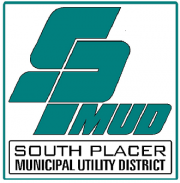South Placer Municipal Utility District


At its inception, the District covered an area of approximately 4,200 acres and had 452 connections. In 1987, the District changed its name to South Placer Municipal Utility District (SPMUD) to reflect its larger service area. Since 1980, the District has experienced an average annual growth rate of approximately 6.5 percent. Currently, the District service area covers approximately 18,560 acres with approximately 20,000 connections, representing over 29,000 Equivalent Dwelling Units (EDU’s).
Initially, the District provided sewage treatment in several sewer treatment lagoon systems, at various sites within the service area. These lagoons were decommissioned in 1974, when the Roseville Trunk Sewer was built to convey the sewage to the Roseville Dry Creek Wastewater Treatment Plant (DCWWTP). At that time, the District entered into a service agreement with the City of Roseville for the treatment of the RLMUD sewage. The District continues to provide for the administration, financing, engineering and construction functions, and the operation and maintenance of the sewer collection system.

At its inception, the District covered an area of approximately 4,200 acres and had 452 connections. In 1987, the District changed its name to South Placer Municipal Utility District (SPMUD) to reflect its larger service area. Since 1980, the District has experienced an average annual growth rate of approximately 6.5 percent. Currently, the District service area covers approximately 18,560 acres with approximately 20,000 connections, representing over 29,000 Equivalent Dwelling Units (EDU’s).
Initially, the District provided sewage treatment in several sewer treatment lagoon systems, at various sites within the service area. These lagoons were decommissioned in 1974, when the Roseville Trunk Sewer was built to convey the sewage to the Roseville Dry Creek Wastewater Treatment Plant (DCWWTP). At that time, the District entered into a service agreement with the City of Roseville for the treatment of the RLMUD sewage. The District continues to provide for the administration, financing, engineering and construction functions, and the operation and maintenance of the sewer collection system.